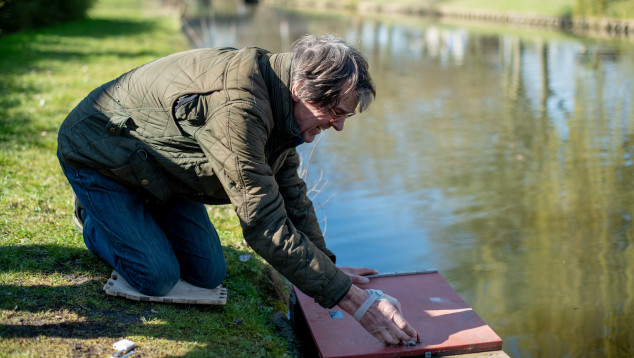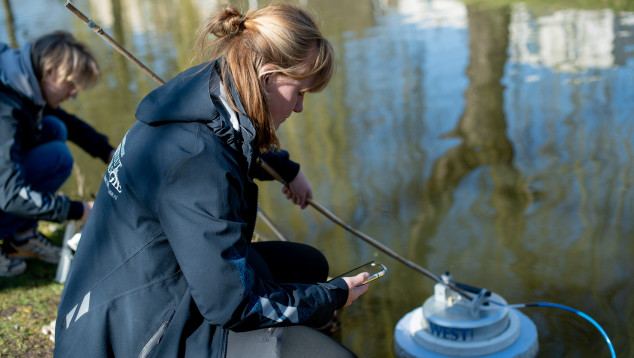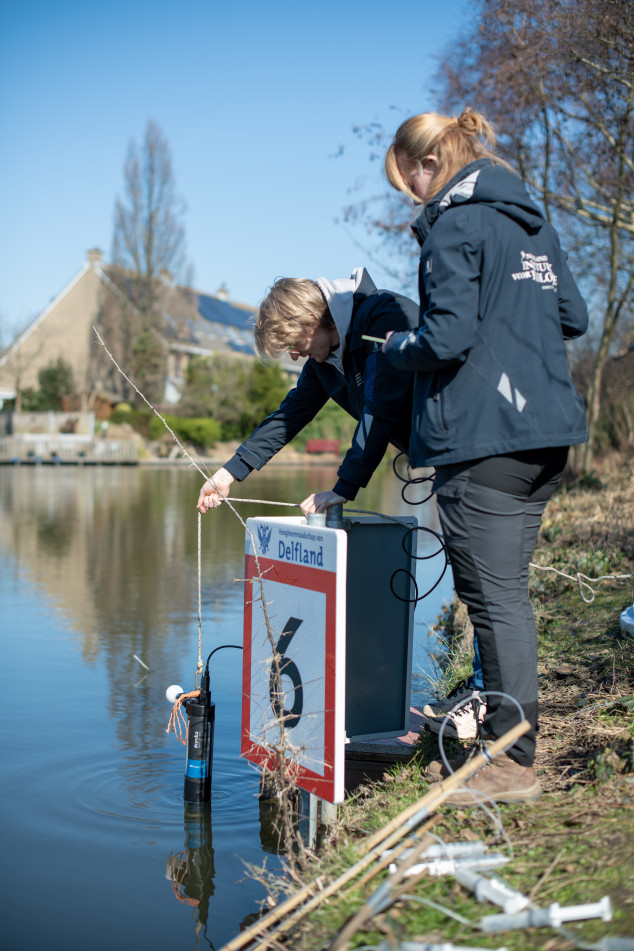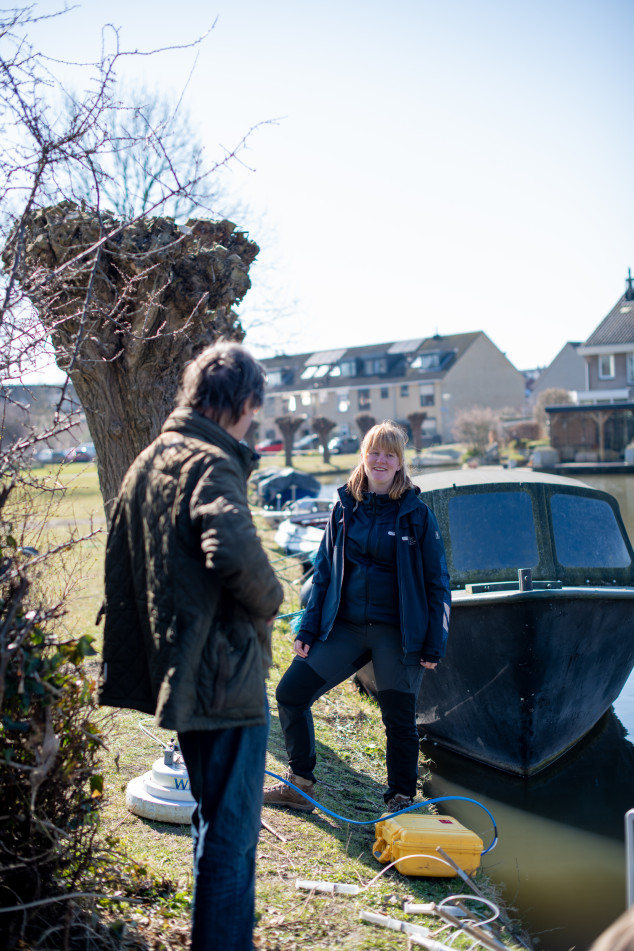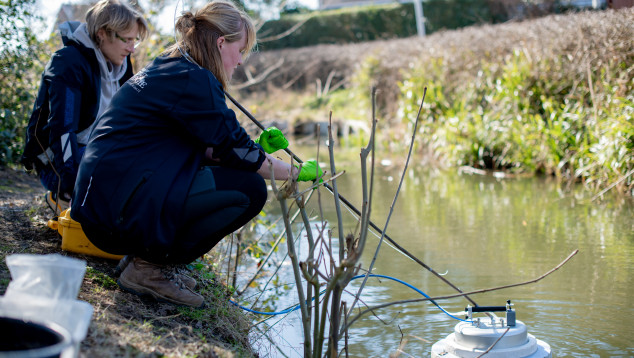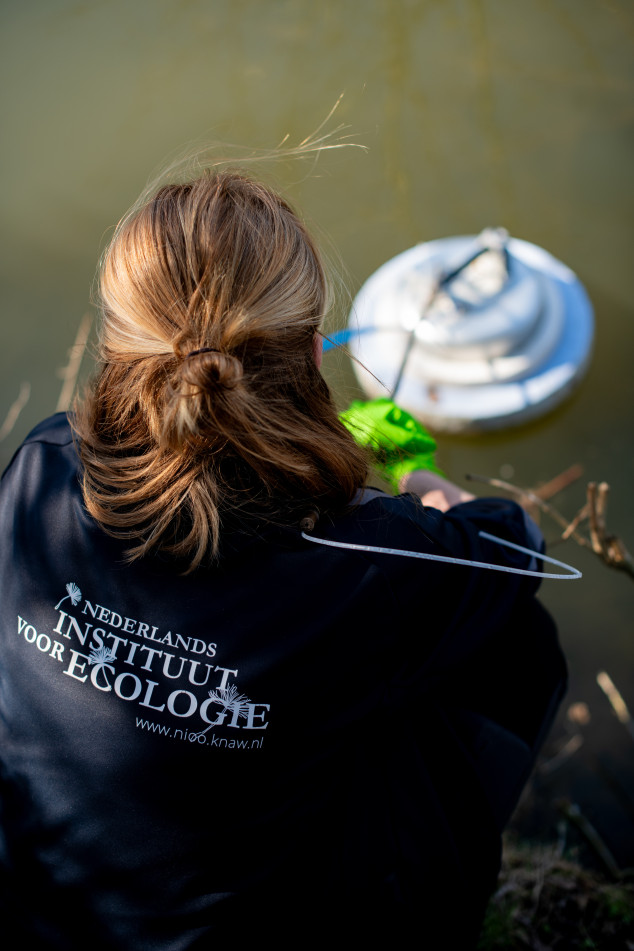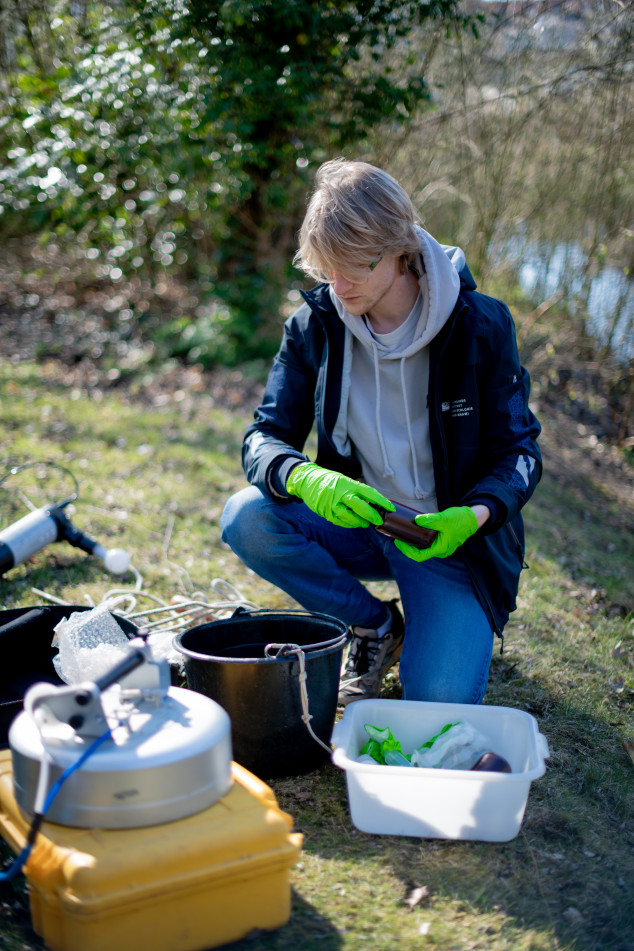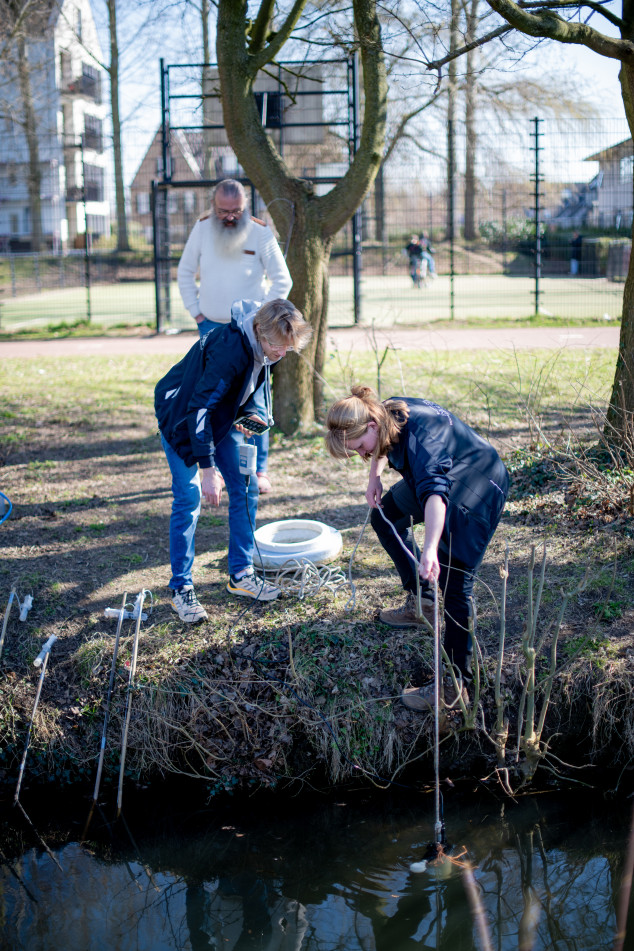A day in the life of a (citizen) scientist
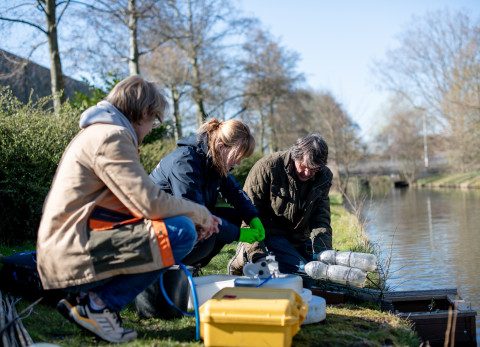
A day in the life of a (citizen) scientist
What does a day as a researcher look like? That greatly depends on what kind of scientist you are. While some are working in greenhouses, and others are programming behind a laptop to process results, it looks different still when a researcher works with citizen scientists. I got to join Rosan van Halsema's fieldwork for her PhD for a day to experience what such a day looks like.
Together with citizen scientists, she investigated how sewage overflows affect water quality. What often happens with water that suddenly acquires a lot of nutrients is that it unbalances the system. Algae grow excessively, the water becomes murkier, oxygen decreases, it becomes increasingly difficult for aquatic animals to survive, and eventually you are left with a lifeless system. But, whether this is also a direct consequence of sewer overflows, when lots of nutrients enter the water in a short period of time, has not been studied before.
8:30
Hitting the road early. At half past eight, Van Halsema and one of her students are already departing from the Netherlands Institute of Ecology (NIOO-KNAW) in Wageningen. Fortunately, the NIOO logo stickered car had been loaded earlier with all the fishing nets, sediment meters and other equipment, which saves some time that morning. On the way, they pick me up, and we continue to Naaldwijk for the first stop.
10:00
In Naaldwijk, w e receive a warm welcome from Aad. The water samples he had taken himself were all ready to go. But, before we set off to the first measurement location, we stopped in at his place, where his wife offered us coffee and biscuits . In a mix of Dutch and English (so that master student Oskar also understands some of it), we talk about the region's environment, and all sorts of books and newspaper clippings emerge detailing how things have been over the last few decades. Also important to hear how his measurements went and if anything unusual happened.
10:30
On to the first measurement site. This stretch of city water sits just downstream of a sewage overflow, a good place to investigate what such a sewage overflow does to water quality. This is where Aad has spent the last three months collecting measurements himself; his frozen water samples and dried coffee filters with suspended matter are now in the NIOO car ready to be studied in more detail in Wageningen. He accompanied us to this measuring site because the equipment was hidden behind lock and key. Afraid of damage and theft by the leisure boats that often sail by, Aad took the trouble to build a protective wooden box around it.
Van Halsema visits these monitoring sites every season to take her own measurements. On the one hand to confirm the accuracy of the citizen scientists' results, and on the other to get additional data that must be done with special equipment that the citizen researchers do not have. Thus, with the help of students, she measures greenhouse gas emissions, all kinds of water properties such as pH and temperature, and takes water samples from the sediment.
11:30
Back in the car for the second measurement site. This is a reference site. This means it is similar to the water at the first site, but is upstream of a sewer overflow instead of downstream. This makes it possible to determine whether the difference in water quality is due to the sewer overflow instead of fluctuations due to other factors such as temperature and precipitation.
Aad accompanied us to this location as well, even though it was not necessary. Partly for interest, partly for fun, but also to introduce Van Halsema to someone who makes a local radio programme. Those local links are very important and one of the benefits of citizen science. By involving citizens immediately, they become a sort of ambassadors for the research and its results. This gives the research more visibility and credibility. In this way, a problem gets local attention, and is supported by the community so that a solution is also worked on locally. This way the research can be applied faster than in the ‘normal’ route, where the results are published in a scientific article after which this information still has to make the step to the citizens who can benefit from it.
13:30
During this phase, Van Halsema visits two citizen scientists in one day. Last time this was not possible yet, because everything was so new to everyone, but by now the measurements are going a bit smoother and the citizen scientists have fewer questions. After Naaldwijk, we therefore drove on to Portugaal, where Jack welcomed us with sandwiches and tea. Again, we first listened to how everything went, what worked and what didn't, before we went to the measurement locations.
This time the measurement site downstream and the reference site upstream of the sewer overflow were within walking distance and very close together. Jack also volunteered to go with along to the sites, a quick trip back home for his photo camera, and also pointed out some good spots for me to take photos from. The measurements went a little faster here. Taking a water sample from the sediment layer takes a very long time, but because the locations were so close to each other, this could be done simultaneously at both locations and then continue with the other measurements. These sites were next to a playground in a somewhat busier area than in Naaldwijk, and after a while some children cautiously came to ask what we were doing. According to Van Halsema, this happens more often, and she calmly took the time to explain why this research is important.
Until next season
In total, Van Halsema will visit 25 citizen scientists and 50 measurement sites in 3-4 weeks for this phase. In three months' time, she will do this all again. These measurements run for a year, in the autumn she will visit all measurement sites for the last time. It isn't finished after this, all the samples have to be studied at in the lab in Wageningen, and then all the results processed so that it becomes clear what those sewer overflows are doing to the water quality.


